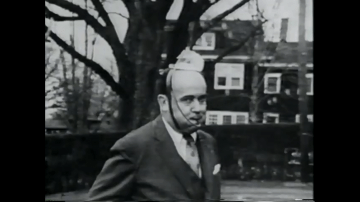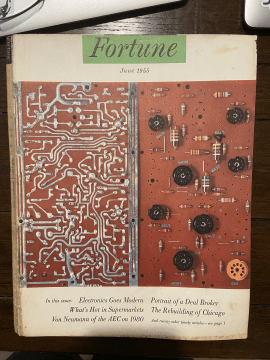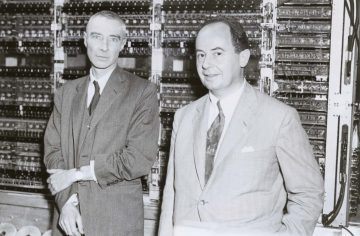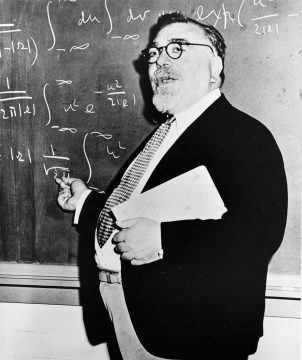I woke up to some welcome news today, news that after an extended period of disappointment and disillusionment, has left me feeling better than I have in a long time. Harper’s Weekly published an open letter signed by an eclectic blend of writers, political scientists, journalists and thinkers across the political spectrum, many of whom have been pillars of the liberal intellectual community for decades. In the letter, Noam Chomsky, Margaret Atwood, Salman Rushdie, Steven Pinker, Nicholas Christakis, Fareed Zakaria, Arlie Russell Hochschild and many others deplore the state in which liberal discourse has descended into for several years.
"The free exchange of information and ideas, the lifeblood of a liberal society, is daily becoming more constricted. While we have come to expect this on the radical right, censoriousness is also spreading more widely in our culture: an intolerance of opposing views, a vogue for public shaming and ostracism, and the tendency to dissolve complex policy issues in a blinding moral certainty."
The entire letter is worth reading and takes aim at several acts by self-described liberals and Democrats over the years that have been attacks on the values of free expression and debate that they professed to have stood up for for decades. It takes to task institutions which are dealing out disproportionate punishments for minor infractions, if one can call them that. It makes the seemingly obvious case that writers can only thrive when they are allowed to experiment and say controversial things – a whole string of historical writers ranging from Virginia Woolf and D. H Lawrence to Nabokov and Franzen attest to this fact. Rushdie himself of course infamously had to go into hiding for several years after the fatwah. The writers of the letter cite dozens of cases of controversial speakers being disinvited from college campuses, professors being censured for citing “controversial” books like Greek classics, editorials being withdrawn from leading newspapers because of internal rebellion and people’s livelihoods and reputations being threatened for simply tweeting about or referring to something that their detractors disliked. In most cases there was a small group of outraged people, usually on Twitter, responsible for these actions.
Most of this of course has been going on for years, even as those of us who believed in free speech without retaliation and diversity of viewpoints have watched with increasing dismay from the sidelines. Some of us have even been targets in the past, although we have not had to face the kind of retribution that other people did. And yet, compared to what has been happening this year, the last few years have seemed tame. I have to say that as much as my disillusionment has grown steadily over time, this year truly seems like the watershed, one that should squarely force us to take a stand.
Let’s first understand that America in 2020 has made everyone’s job difficult: the country is now being led by a racist, ignorant child-president with dictatorial aspirations who calls the press the enemy of the people and whose minions take every chance they can to try to silence or threaten anyone who disagrees with them, who actively spread misinformation and lies, whose understanding of science and reason is non-existent, and who have been collectively responsible not just for the dismantling of critical public institutions like the EPA and the justice department but for orchestrating, through inaction, one of the deadliest public health crises in the history of the country that has killed hundreds of thousands. One would think that all of us who are opposed to this administration and their abandonment of the fundamental values on which this country has been founded would be utterly horrified and unified at this time.
Sadly, the opposite has happened, and it’s why the Harper’s letter seems like a bright pinprick in a dark landscape to me. For an increasing portion of the self-professed liberal establishment, the answer to Trump has been to go crazy in the other direction. Until this year, I generally used to reject the slippery slope argument – the argument that those even with whom I strongly disagreed will keep on going down a slippery slope. I thought that that would stop at a reasonable juncture. Sadly, I no longer think that way. Three examples among many will suffice, and I think all three are emblematic of larger trends:
First: After the horrific murder of George Floyd, while we were standing in solidarity with the black community and condemning the use of excessive force by police departments across the country, peaceful protests across the country turned into violent demonstrations accompanied by looting. Now most of the protestors were peaceful, so I thought that my fellow liberals would cleanly draw a line and denounce the looters while supporting the protests. But this seldom happened; both on my private social media accounts as well as publicly, people started excusing the looting as a justified act of desperation. Worse still, they started to recruit cherry-picked historical examples of civil rights leaders to make their case, including this speech by MLK Jr. in which he seems to justify violence as a desperate act before making it very clear that it is not the right way of going about things. But even if you hadn’t heard the entire speech, to hold someone who is literally the biggest symbol of non-violent protests in modern times along with Mahatma Gandhi as a spokesperson for violent protests is bizarre to say the least.
The ahistorical anomalies continued. One of my favorites was a tweet by Charles Blow of the New York Times who justified the looting by comparing it with the Boston Tea Party. I find it hard to believe that Blow doesn’t know what happened after they threw the tea into the water – they not only stripped naked and castigated a fellow Son of Liberty after they found out that he had secretly pocketed the tea, but they came back later and replaced the lock of the ship they had broken. Unlike the looters, the Boston Patriots had a profound respect for private property. In fact, it was precisely British insults to private property by way of quartering soldiers in private residences that served as a spark for the revolution. In addition, as Richard Rothstein painstakingly documents in his superb book "The Color of Law", laws were explicitly enacted precisely to deny African-Americans and other minorities access to private housing for decades, so it's ironic to see mobs destroying private property in their own communities and crippling the livelihoods of folks - many of whom are poor immigrants with small businesses - who had nothing to do with the cause of the protests.
The ahistorical anomalies continued. One of my favorites was a tweet by Charles Blow of the New York Times who justified the looting by comparing it with the Boston Tea Party. I find it hard to believe that Blow doesn’t know what happened after they threw the tea into the water – they not only stripped naked and castigated a fellow Son of Liberty after they found out that he had secretly pocketed the tea, but they came back later and replaced the lock of the ship they had broken. Unlike the looters, the Boston Patriots had a profound respect for private property. In fact, it was precisely British insults to private property by way of quartering soldiers in private residences that served as a spark for the revolution. In addition, as Richard Rothstein painstakingly documents in his superb book "The Color of Law", laws were explicitly enacted precisely to deny African-Americans and other minorities access to private housing for decades, so it's ironic to see mobs destroying private property in their own communities and crippling the livelihoods of folks - many of whom are poor immigrants with small businesses - who had nothing to do with the cause of the protests.
But all these distinctions were lost, especially at the New York Times who tied themselves up into a real knot by publishing an op-ed by Senator Tom Cotton. In the last few years Cotton has emerged as one of the most racist and xenophobic of all Trump supporters and I detest him. Cotton wrote a biased and flawed op-ed that called for the army to step in to pacify cities where looting was taking place. Knowing his past this was a convenient position for him and I completely disagreed with it; I did think there needed to be some way for law and order to be imposed, but the last thing we need in the middle of a militarized police force is the actual military. Nevertheless, it turned out that a fair percentage of the country agreed with him, including a fair share of Democrats, and Cotton is a sitting United States senator after all, so as an elected public official his views needed to be known, not because they were right but because they were relevant. I suddenly felt newfound respect for the New York Times for airing dissenting views that would allow their readers to get out of their echo chambers and take a stroll in a foreign country, but it didn't last long. As we now know, there was a virtual coup inside the paper and the op-ed editor resigned. As Andrew Sullivan said in a must-read piece it is deeply troubling when an ideological faction – any ideological faction – can hold a news source hostage and force it to publish only certain viewpoints conducive to their own thinking.
A similar reaction against what were entirely reasonable responses to the looting spilled over into other institutions and individuals’ lives. In perhaps the most bizarre example, David Shor who is an analyst at a New York City firm - and whose Twitter profile literally includes the phrase “I try to elect Democrats” - was fired for tweeting a study by a black professor at Princeton that said that non-violent protests are more effective than violent ones. Just chew on that a bit: an individual was fired merely for tweeting, and not just tweeting anything but tweeting something that MLK Jr. would have heartily approved of. When people actually face retribution for pointing out that non-violence works better than violence, you do feel like you are in a mirror universe.
Second: The statue controversy. The killing of Floyd set off a wave of protests that extended to many other areas, some because of feuds brewing for years; for more than a hundred years in this particular case. I am all for the removal of Confederate Statues; there is nothing that is redeeming in them, especially since many of them were put up by white supremacists decades after the war ended. While the bigger issue of acknowledging memory and history is complicated, the latest ray of light for me came from Eliot Cohen, a dean at Johns Hopkins who cut through the convoluted thicket to come up with a simple rule that’s as clear as anything in my opinion for weighing historical figures in the scales of justice. Cohen asked those who were demanding the statues to be taken down to ask if the thing that they were criticizing a person for was the most important thing he or she was known for. This question immediately creates a seismic divide between Confederates and Founding Fathers. If the Civil War had not happened, Robert E. Lee would have been a better than average soldier who fought with distinction during the Mexican-American War. If Thomas Jefferson had never owned and abused slaves and had illegitimate children with Sally Hemings, he would have still been the father of religious freedom, the Louisiana Purchase, the University of Virginia, scientific inquiry and the Declaration of Independence – a document that, even if it was not applied universally, had such abstract power that it kept on being cited all the time by figures as diverse as Abraham Lincoln and Ho Chi Minh, not to mention Frederick Douglass and MLK Jr. Jefferson would have still done these great things if you took away his slavery and hypocrisy. Washington is even more unimpeachable since he led the country to freedom during the war and unlike Jefferson freed his slaves. The fact that these were flawed men who still did great things is hardly a novel revelation.
Sadly, you know that your side is losing the war of ideas when they start handing propaganda victories to the side you despise on a platter. Three years ago, in the context of a Lee statue that was going to be taken down, after that terrible anti-Semitic Charlottesville rally by white supremacists, Trump made a loathsome remark about there being “fine people” on all sides and also asked a journalist that if it was Lee today, would it be Jefferson or Washington next? I of course dismissed Trump’s remark as racist and ignorant; he would not be able to recite the Declaration of Independence if it came wafting down at him in a MAGA hat. But now I am horrified that liberals are providing him with ample ammunition by validating his words. A protest in San Francisco toppled a statue of Ulysses S. Grant – literally the man who defeated the Confederacy and destroyed the first KKK – and defaced a statue of Cervantes, a man who as far as we know did not write “Don Quixote” while he was relaxing from a day’s fighting for the Confederacy or abusing slaves. University of Wisconsin students recently asked for a statue of Lincoln to be removed because he had once said some uncomplimentary words about black people. And, since it was just a matter of time, the paper of record just published an op-ed calling for the Jefferson Memorial in Washington to be taken down. Three years ago, if you had asked me if my fellow liberals would go from Robert E. Lee to Jefferson and Washington and Grant so quickly, I would have expressed deep skepticism. But here we are, and based on recent events it won’t be paranoid at all to ask that if Washington statues are next, would streets or schools named after Washington also be added to the list? How about statues of Plato and Aristotle who supported slavery as a natural state of man? And don’t even get me started on Gandhi who said some very unflattering words about Africans. The coefficient of friction on the slippery slope is rapidly going to zero.
Third item in the parade of items signifying a spiraling descent into intolerance - A call to bar Steven Pinker from the Linguistic Society of America’s list of distinguished fellows and media experts. This call would be laughable if it weren’t emblematic of a deeper trend. My fellow liberal Scott Aaronson has already indicated the absurdity of the effort in his post not in the least because Pinker has championed liberalism, evidence-based inquiry and rational thought all throughout his long career. The depressing thing is that the tactics are not new: guilt by association, cherry-picking, an inability to judge someone by the totality of their behavior or contributions, no perception of gray in an argument and so on. The writers don’t like the fact that Pinker tweeted a study showing that police encounters with black people aren’t particularly violent (but that there are more encounters to begin with, so the probability of one turning violent is higher), tweeted that a horrific fatal attack by a disgruntled man at UCSB on women did not imply higher rates of violence against women in general and said in his widely-praised book “The Better Angels of our Nature” that a seemingly mild-mannered man in New York City shockingly turned out to be violent. Pinker has never denied the suffering of individuals but has simply pointed out that that suffering should not blind us to progress at large. As hard is it might be to believe this, liberals are punishing someone who says that the world has at large become a better place because we have embraced liberal values. Again, this feels like we have stepped into a surreal mirror universe.
As biologist Jerry Coyne has explained on his blog, none of these accusations hold water and the protestors are on exceedingly thin ice, but what is noteworthy is the by now all-too-common accusation by selective misrepresentation and the detailed combing through (and a disastrous one at that) of every tweet, every “like” from Pinker that would be evidence of his awfulness as a human being and affront to the orthodoxy. If this does not seem like a job for an incompetent and yet obsessive Orwellian bureaucrat or a member of the NKVD during Stalin’s show trials, I don’t know what is (as Robert Conquest described in his famous account of Stalin’s purges, going through someone’s entire life history with a fine-toothed comb and holding up even the slightest criticism of the dear leader or disagreement with party orthodoxy was almost de rigueur for the Soviets and the Stasi). Perhaps completely unsurprisingly, the doyen of American linguistics, Noam Chomsky, refused to sign the letter and instead signed the other one; Chomsky has consistently been an exemplary supporter of free speech and has famously pointed out that if you support only free speech that you like, you are no different from Goebbels who was also a big fan of speech he liked. But Pinker’s example again goes to show that the slippery slope argument is no longer a fictitious one or a strawman. If we went from Milo Yiannopoulos to Steven Pinker in three years, it simply does not feel paranoid to think that we could get to a very troubling place in three more years.
The whole development of course is very sad, certainly a tragedy but rapidly approaching a farce. Liberals and Democrats were supposed to be the party of free speech and intelligent dialogue and tolerance and viewpoint diversity. The Republican Party, meanwhile, is not a political party anymore but a “radical insurgency” as Chomsky puts it. It is a blot not just on true conservatism but on common sense and decency. The reason I feel particularly concerned this year is because I have always felt that, with Republicans having descended into autocracy and madness, liberal Democrats are the one and only thing standing between democracy and totalitarianism in this country. I have been disillusioned with their abandonment of unions and disparaging of “middle America” for a long time, but I still thought they upheld traditional, age-old liberal values. With Republicans not even making a pretense of doing this, one would think the Democrats have a golden opportunity to pick up the baton here. But instead you have a party that has embraced diversity provided it’s of the kind they like, allows for no nuance or sliding scale of disagreement, accuses people of being some kind of “ist” with the spirit of the Inquisition and refuses to see individuals as individuals rather than as part of their favorite or their despised groups. If Democrats give up on us, what other group of influence can save the country?
Quite apart from how this behavior abandons the values that have made this country a great one, it is a disastrous political strategy. Currently, the number one goal of any American citizen with any amount of decency and intelligence should be to hand Donald Trump and his unscientific, racist, ignorant administration the greatest defeat in American electoral history. Almost nothing else is as important this year. There are sadly still people who are on the fence – these people cannot let go of the Republican Party for one reason or another, but especially in the last few months one hopes that enough of them have become disillusioned with the Trump administration’s utter incompetence, casual cruelty and dog whistle signaling to consider voting for the other guy. The Democrats should be welcoming these people into their ranks with open arms, so would it be harder or easier for fence-sitters to think of voting Democrat when they see self-proclaimed Democrats toppling random statues, unleashing Twitter mobs on people they disagree with and trying to destroy their careers and basically trying to disparage or eliminate anyone who may think slightly differently from the sphere of discourse?
I came to this country as an immigrant, and while several reasons brought me here just like they do all immigrants, science and technology and freedom of speech were the top two things that I loved and continue to love about the United States. When I was growing up in India, my father who was an economics professor at a well-known college used to tell me how he taught econometrics classes during the Indian Emergency of the 1970s when the Constitution was suspended by the Prime Minister, Indira Gandhi. He told me how he used to occasionally see a government agent standing behind during his classes, taking notes, making sure he was not saying something subversive. It can only be amusing if parts of partial different equations used in econometrics were regarded as subversive (and if the agents understood them), but it was nonetheless a sobering experience. It would have been far worse had my father lived in Cambodia during the same time. While it’s to India’s democratic credit that it escaped from that hole, even today much of freedom of speech in India, while enshrined in the Constitution, is on paper. As several recent incidents have shown, you can get in trouble if you criticize the government, and in fact you can get in trouble even from your fellow citizens who may rat you out and file lawsuits against you. Even in Britain you have libel laws, and of course free speech is non-existent in countries like Saudi Arabia. In my experience, Americans who haven’t lived abroad often don’t appreciate how special their country is when it comes to free speech. Sadly, as the current situation shows, we shouldn’t take it for granted.
When I complain about problems with free speech in this country, fellow liberals tell me – as if I have never heard of the US Constitution - how it only means that the government cannot arrest you if you say something incendiary. But this point is moot since people can stifle each other’s ideas as thoroughly as the government does, and while informal censure has been around since we were hunter gatherers, when it gets out of hand as it seems to these days, one can see a pall of conformity and a lack of diversity descending over the country. This also puts in a dim light the objection that there cannot be speech without consequences – as David Shor’s example shows, if the results include getting fired or booted out from professional organizations for almost anything you say, these “consequences” are almost as draconian as government oppression and should be unacceptable. As he did with many things, John Stuart Mill said it best in his “On Liberty”,
“Protection, therefore, against tyranny of the magistrate is not enough: there needs protection also against the tyranny of the prevailing opinion and feeling; against the tendency of society to impose, by other means than civil penalties, its own ideas and practices as rules of conduct on those who dissent from them; to fetter the development, and, if possible, prevent the formation, of any individuality not in harmony with its ways, and compel all characters to fashion themselves upon the model of its own.”
It’s also worth remembering that there is much less distinction between “the people” and “the government” than we think since today’s illiberal anti-free speech activists are tomorrow’s politicians, community leaders, writers and corporate leaders. And we would be laboring under a truly great illusion if we think that these supposedly well-intentioned activists cannot become repressive; everyone can become repressive if given access to power. The ultimate question is not whether we want a government which does not tread on our freedom - we settled that question in 1787 - it’s about what kind of country we want to live in: one in which ideas, even unpleasant ones, are confronted with other ideas in a sphere of spirited public debate, or one in which everyone boringly thinks the same thing, there is no opportunity for dissent, nuanced thinking is thrown out of the window and anybody who challenges the orthodoxy is to be eliminated from public discourse one way or another? Because those are definitely not the values that made this country the envy of the world and the one that its founding ideals envisaged.






















